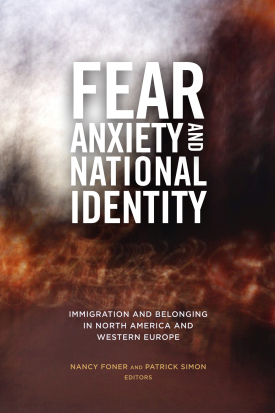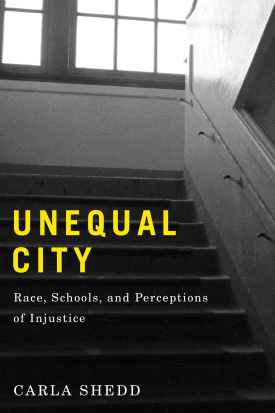Political scientists have posited that the shift of many white working-class voters from the Democratic Party to the Republican Party may be related to the Democrats' association with black Americans and ethnic minorities. This change raises questions about how attitudes are formed and about the malleability of social identity. How do white working-class voters define common (or in-group) identity, and how does exposure to different kinds of social messages affect their sense of common fate with others outside their group?
Paul von Hippel and Douglas Downey will use new data and better methods to examine the question of how much school and non-school environments contribute to gaps between advantaged and disadvantaged students. Specifically, they will use a seasonal research design embedded in a new national cohort survey to compare how quickly gaps change when school is in session during the academic year versus when school is out for summer vacation.
Education is often seen as an equalizer. But not everyone goes to college and those who do so enter a tiered system of schools and exit into a labor market that values more than educational credentials. Individuals with a bachelor's degree earn nearly $22,000 more per year and are less than half as likely to be unemployed than individuals with just a high school diploma. However, racial inequality is prevalent for college graduates, as black men make approximately 75% of the wages of white men and black women make approximately 90% of the wages of white women.

Fear, Anxiety, and National Identity
About This Book
Western European countries such as Germany, the Netherlands, and the United Kingdom have witnessed a significant increase in Muslim immigrants, which has given rise to nativist groups that question their belonging. Contributors Thomas Faist and Christian Ulbricht discuss how German politicians have implicitly compared the purported “backward” values of Muslim immigrants with the German idea of Leitkultur, or a society that values civil liberties and human rights, reinforcing the symbolic exclusion of Muslim immigrants. Similarly, Marieke Slootman and Jan Willem Duyvendak find that in the Netherlands, the conception of citizenship has shifted to focus less on political rights and duties and more on cultural norms and values. In this context, Turkish and Moroccan Muslim immigrants face increasing pressure to adopt “Dutch” culture, yet are simultaneously portrayed as having regressive views on gender and sexuality that make them unable to assimilate.
Religion is less of a barrier to immigrants’ inclusion in the United States, where instead undocumented status drives much of the political and social marginalization of immigrants. As Mary C. Waters and Philip Kasinitz note, undocumented immigrants in the United States. are ineligible for the services and freedoms that citizens take for granted and often live in fear of detention and deportation. Yet, as Irene Bloemraad points out, Americans’ conception of national identity expanded to be more inclusive of immigrants and their children with political mobilization and changes in law, institutions, and culture in the wake of the Civil Rights Movement. Canadians’ views also dramatically expanded in recent decades, with multiculturalism now an important part of their national identity, in contrast to Europeans’ fear that diversity undermines national solidarity.
With immigration to North America and Western Europe a continuing reality, each region will have to confront anti-immigrant sentiments that create barriers for and threaten the inclusion of newcomers. Fear, Anxiety, and National Identity investigates the multifaceted connections among immigration, belonging, and citizenship, and provides new ways of thinking about national identity.
NANCY FONER is Distinguished Professor of Sociology at Hunter College and the Graduate Center of the City University of New York.
PATRICK SIMON is Director of Research at the Institut national d’études démographiques (National Institute for Demographic Studies).
CONTRIBUTORS: Irene Bloemraad, Jan Willem Duyvendak, Thomas Faist, Nancy Foner, Gary Gerstle, Philip Kasinitz, Nasar Meer, Tariq Modood, Deborah J. Schildkraut, Patrick Simon, Marieke Slootman, Varun Uberoi, Christian Ulbricht, Mary C. Waters
Fear, Anxiety, and National Identity: Immigration and Belonging in North America and Western Europe
RSF Journal
View Book Series
Sign Up For Our Mailing List
Apply For Funding

Unequal City
About This Book
Winner of the 2016 C. Wright Mills Award from the Society for the Study of Social Problems
Winner of the 2016 Distinguished Contribution to Scholarship Book Award Presented by the American Sociological Association's Section on Race, Gender, and Class
Honorable Mention, 2017 Outstanding Book Award from the Inequality, Poverty, and Mobility Section of the American Sociological Association
“Unequal City is a revelatory study that shows and tells how inner city young people struggle to acquire a decent education. It powerfully describes the everyday challenges these students face—illuminating how they navigate school and their local communities and the way they confront what too often holds them back. This book should be required reading for anyone who wants to understand the relationship between inequality and urban education.”
—Elijah Anderson, William K. Lanman, Jr. Professor of Sociology, Yale University
“Carla Shedd has written an important book about how race and place shape the experiences of young people in Chicago. Unequal City stands out for many reasons, but most importantly for its empirical richness. Shedd has amassed amazing data and uses both quantitative and qualitative methods to amplify the voices of young people. If you want to understand what young people think about such topics as the police, schools, and in-equality, you should read this book. It is a timely and insightful book.”
–Cathy Cohen, David and Mary Winton Green Professor of Political Science, University of Chicago
Chicago has long struggled with racial residential segregation, high rates of poverty, and deepening class stratification, and it can be a challenging place for adolescents to grow up. Unequal City examines the ways in which Chicago’s most vulnerable residents navigate their neighborhoods, life opportunities, and encounters with the law. In this pioneering analysis of the intersection of race, place, and opportunity, sociologist and criminal justice expert Carla Shedd illuminates how schools either reinforce or ameliorate the social inequalities that shape the worlds of these adolescents.
Shedd draws from an array of data and in-depth interviews with Chicago youth to offer new insight into this understudied group. Focusing on four public high schools with differing student bodies, Shedd reveals how the predominantly low-income African American students at one school encounter obstacles their more affluent, white counterparts on the other side of the city do not face. Teens often travel long distances to attend school which, due to Chicago’s segregated and highly unequal neighborhoods, can involve crossing class, race, and gang lines. As Shedd explains, the disadvantaged teens who traverse these boundaries daily develop a keen “perception of injustice,” or the recognition that their economic and educational opportunities are restricted by their place in the social hierarchy.
Adolescents’ worldviews are also influenced by encounters with law enforcement while traveling to school and during school hours. Shedd tracks the rise of metal detectors, surveillance cameras, and pat-downs at certain Chicago schools. Along with police procedures like stop-and-frisk, these prison-like practices lead to distrust of authority and feelings of powerlessness among the adolescents who experience mistreatment either firsthand or vicariously. Shedd finds that the racial composition of the student body profoundly shapes students’ perceptions of injustice. The more diverse a school is, the more likely its students of color will recognize whether they are subject to discriminatory treatment. By contrast, African American and Hispanic youth whose schools and neighborhoods are both highly segregated and highly policed are less likely to understand their individual and group disadvantage due to their lack of exposure to youth of differing backgrounds.
CARLA SHEDD is assistant professor of sociology and African American studies at Columbia University.
RSF Journal
View Book Series
Sign Up For Our Mailing List
Apply For Funding
Pagination
- Previous page
- Page 39
- Next page
